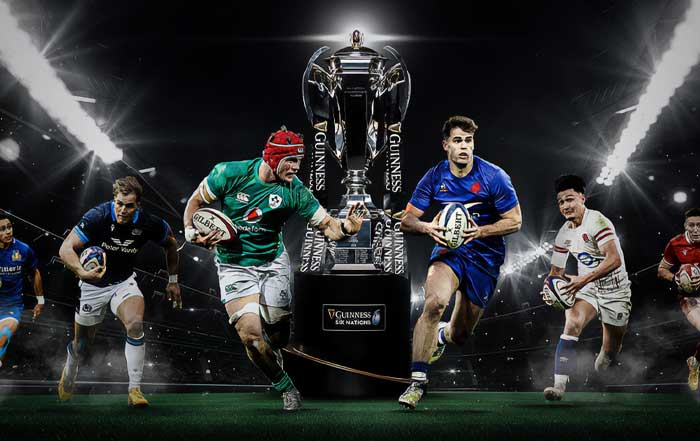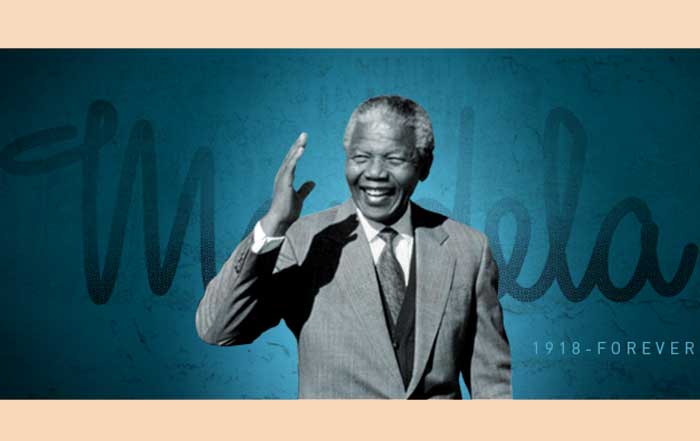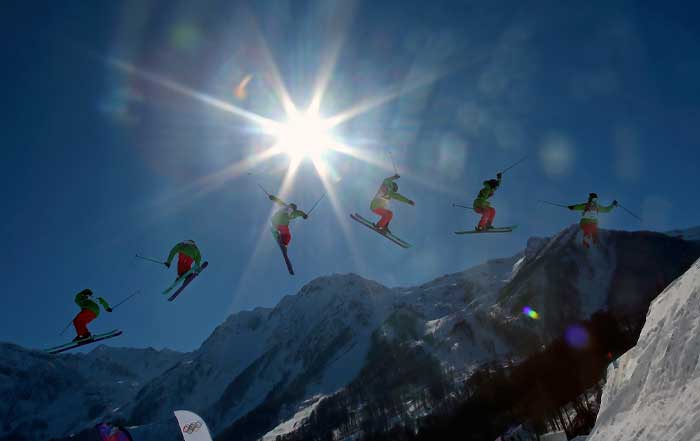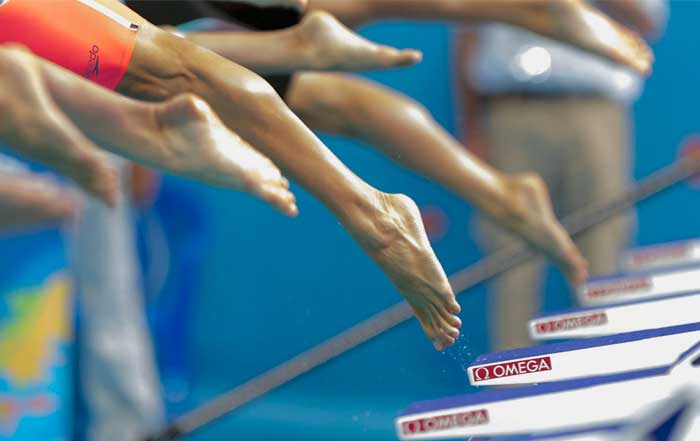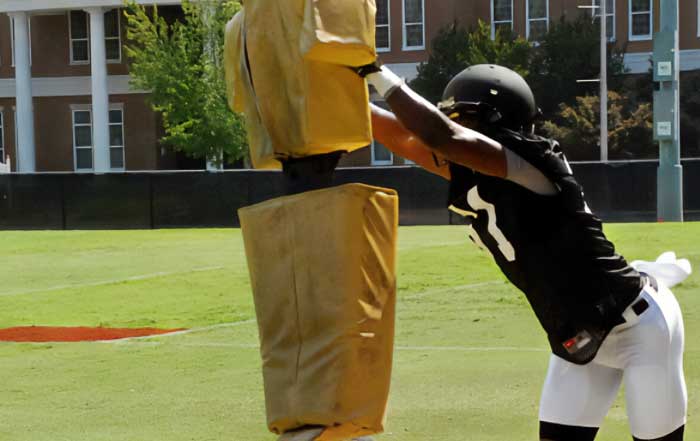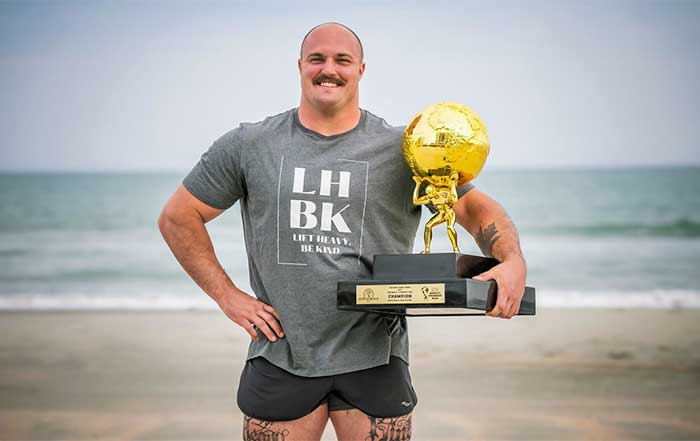Europe stands as one of the most diverse and vibrant continents in the world, not only in terms of languages, cultures, and traditions but also in the ways in which sports are practiced, celebrated, and embedded into the social fabric. From football stadiums filled with roaring fans in Spain and England to alpine skiing slopes in Switzerland, cycling roads in the Netherlands, and basketball courts in Lithuania, sports are a lens through which Europeans express national identity, community pride, and cultural belonging. In 2025, sports in Europe have become even more intertwined with issues of business, technology, and lifestyle, reflecting the continent’s evolution in global influence and its constant negotiation between tradition and modernity.
The cultural differences in sports across Europe reveal how history, geography, politics, and economics shape the games people play and the way they are celebrated. At SportyFusion.com, where fitness, culture, and global sports insights converge, understanding these cultural contrasts allows readers to appreciate how sports not only entertain but also define identity, community, and values across different regions. The narrative of European sports is not just about matches, tournaments, and athletes; it is also about society itself and the way in which shared passions cross borders while highlighting unique cultural distinctions.
Explore more about global sports trends.
Football: The Unifying Giant with Regional Flavors
Football, or soccer as it is called in North America, is undeniably the most popular sport in Europe, yet its culture varies remarkably from one nation to another. In England, the sport is deeply ingrained into the national psyche, with the English Premier League (EPL) not only serving as the most-watched football league globally but also shaping fan culture through traditions, rivalries, and chants that date back decades. Clubs like Manchester United, Liverpool, and Arsenal have become global brands, representing not only competitive excellence but also international commercial power. Learn more about football as a global business.
In Spain, football culture embodies artistry and passion. The fierce rivalry between Real Madrid and FC Barcelona, commonly known as El Clásico, transcends sport and represents historical, political, and regional divisions between Castile and Catalonia. Spanish football emphasizes technical skill and fluid passing, a style embodied by legends such as Xavi and Iniesta, and carried into the modern era by new generations of players.
Meanwhile, Germany presents football as a model of efficiency and structure. The Bundesliga is known for its affordable ticket prices, high attendances, and strong emphasis on fan ownership through the "50+1 rule," which ensures that clubs remain deeply connected to their supporters. German clubs like Bayern Munich and Borussia Dortmund embody a balance between sporting success and financial responsibility. Learn more about sustainable football management.
Italy, on the other hand, presents football as an art form mixed with tactical discipline. The Serie A has long been associated with defensive strategies such as catenaccio, but Italian football also reflects the country’s love for style and drama. Stadium atmospheres are infused with regional pride, as rivalries between clubs like AC Milan, Inter Milan, and Juventus continue to captivate global audiences.
Explore culture-driven sporting rivalries.
Basketball: From the Baltics to Southern Europe
While football dominates much of Europe, basketball holds a unique cultural status in several countries, particularly in Lithuania, Serbia, Spain, and Greece. Lithuania, despite its small population, has consistently produced world-class basketball players and nurtured one of the most passionate fan bases in the sport. Basketball there is seen not just as a game but as a symbol of national identity, especially after the country’s independence from the Soviet Union.
In the Balkans, nations such as Serbia and Croatia view basketball as a cultural export, producing talents that have become stars in the NBA. Serbian teams such as KK Partizan and Crvena Zvezda maintain strong domestic rivalries, and basketball matches are celebrated with the same intensity as football.
Spain also stands out as a basketball powerhouse, with Real Madrid Basketball and FC Barcelona Basketball competing at the highest levels of the EuroLeague. Spanish players such as Pau Gasol and Ricky Rubio have contributed to the global recognition of Spain as a basketball nation. In Greece, basketball is equally passionate, with clubs like Olympiacos and Panathinaikos drawing massive crowds and symbolizing deep-rooted social identities.
Read more about sports performance across disciplines.
🏆 European Sports Culture Map
Explore the diverse sporting traditions across Europe
Western Europe
- Football Dominance
- Professional Cycling
- Tennis Culture
Southern Europe
- Artistic Football
- Basketball Rising
- Lifestyle Sports
Northern Europe
- Winter Sports
- Ice Hockey
- Grassroots Focus
Central Europe
- Alpine Skiing
- Efficient Football
- Community Clubs
Eastern Europe
- Basketball Passion
- Olympic Tradition
- Volleyball Power
Balkans
- Basketball Export
- Football Rivalries
- Cultural Identity
Select a Region
Click on any region above to explore its sports culture
Europe's sports landscape is incredibly diverse, shaped by history, geography, and cultural traditions. From football stadiums to alpine slopes, each region has developed unique sporting identities that reflect national pride and community values.
Key Highlights:
- Football remains the continent's most popular sport with distinct regional styles
- Basketball thrives in the Baltics and Balkans as cultural expression
- Winter sports dominate Alpine and Nordic regions
- Cycling is deeply embedded in Western European lifestyle
- Women's sports and eSports are rapidly growing across all regions
Cycling: A Cultural Institution in Western Europe
Cycling is more than a sport in countries like France, Belgium, and the Netherlands; it is a way of life. The Tour de France, established in 1903, remains the most prestigious cycling race in the world and an annual cultural event for France. It unites the country’s rural and urban populations in a shared celebration of endurance, history, and geography. Cycling also has strong grassroots traditions, with French towns regularly serving as hosts to stages and fostering young talent through local clubs.
In Belgium, cycling culture is marked by gritty one-day races known as the Classics, such as the Tour of Flanders and Liège-Bastogne-Liège. These races embody the nation’s working-class pride and resilience, with fans enduring cold, wet, and windy conditions to cheer on their heroes.
The Netherlands approaches cycling as both sport and daily lifestyle. With cities designed around bicycles, the Dutch see cycling not only as competitive but also as central to health, sustainability, and mobility. Dutch riders have left significant marks in international racing, but the deeper cultural connection lies in how cycling reflects national values of accessibility and community. Learn more about sustainable transportation.
Discover cultural intersections of health and sport.
Winter Sports: The Alpine Advantage
In alpine countries such as Switzerland, Austria, and France, winter sports like skiing, snowboarding, and ice hockey dominate the cultural landscape. Skiing in Switzerland and Austria is not just a leisure activity but also a central part of tourism and local identity. Resorts such as St. Moritz and Kitzbühel have become international icons, attracting both elite athletes and visitors seeking luxury and challenge. Winter sports have also driven local economies, with governments and private investors ensuring that the infrastructure remains cutting-edge.
Ice hockey, particularly in countries like Switzerland, Sweden, and Finland, holds a strong cultural presence. In Sweden and Finland, the sport has become a national pastime, producing players who have gone on to excel in the NHL. Fans of clubs such as Frölunda HC in Sweden and Jokerit in Finland fill arenas with unmatched enthusiasm, highlighting the communal aspect of the sport.
Read more about global sporting environments.
The Role of Sports in Identity and Politics
European sports culture cannot be separated from the continent’s complex history and political narratives. Football clubs in Spain and Italy often symbolize regional identities and political stances, while in the Balkans, sporting rivalries continue to echo the tensions of historical conflicts. In Ireland, sports such as Gaelic football and hurling, governed by the Gaelic Athletic Association (GAA), serve as expressions of cultural independence from British influence.
In Germany, the 2006 FIFA World Cup was celebrated as a turning point in reshaping national pride, creating a new wave of patriotism that was inclusive and international. In Eastern Europe, sports often reflect struggles of transition from socialist regimes to market economies, shaping how clubs are managed and how fans engage with their teams.
Learn more about sports and social identity.
Women’s Sports: Rising Recognition and Cultural Shifts
In recent years, women’s sports have gained significant recognition across Europe, reshaping cultural attitudes and challenging long-standing gender norms. Football has been at the forefront of this transformation. Nations such as England, France, Germany, and Spain have invested heavily in women’s football, with clubs like Chelsea Women, Olympique Lyonnais Féminin, and FC Barcelona Femení emerging as powerhouses on the global stage. The success of international competitions like the UEFA Women’s Champions League and the FIFA Women’s World Cup, particularly when hosted in Europe, has drawn record audiences both in stadiums and through digital broadcasts. Learn more about women’s football development.
Beyond football, women’s sports in athletics, cycling, tennis, and basketball are gaining increased visibility. Tennis remains one of the most gender-balanced sports in terms of global popularity and earnings, with European athletes like Iga Świątek from Poland and Ons Jabeur from Tunisia (with strong ties to Europe through her career in France) redefining the future of the women’s game. Cycling has also made strides with initiatives such as the Tour de France Femmes, reinforcing the importance of equality in visibility and sponsorship.
These shifts are not only athletic milestones but also cultural reflections of changing social attitudes across Europe. Women’s participation in sports is increasingly seen as central to discussions on equality, health, and opportunity, fostering grassroots programs and inspiring younger generations. Discover how culture influences sports participation.
eSports: The Digital Arena of a New Generation
Alongside traditional sports, eSports has emerged as a new cultural phenomenon across Europe, blending competition with technology, business, and entertainment. Cities like Berlin, Copenhagen, and Katowice have become eSports hubs, hosting international tournaments that draw massive live audiences and millions of online viewers. Games such as League of Legends, Counter-Strike 2, and FIFA eSports have cultivated fan communities that rival traditional sports in terms of engagement.
The rise of eSports reflects Europe’s broader investment in digital innovation and gaming culture. National governments and private organizations are increasingly recognizing the industry’s economic potential, leading to investments in infrastructure, training facilities, and even crossovers with traditional sports clubs. For instance, football giants like Paris Saint-Germain (PSG) and Manchester City have established eSports divisions, highlighting how the boundaries between physical and digital sports are blurring. Learn more about the impact of gaming on culture.
Business and Economics of European Sports
Sports in Europe are not only cultural phenomena but also multi-billion-dollar industries that shape national and continental economies. The Premier League in England is one of the world’s most lucrative sporting products, contributing billions annually to the UK economy through broadcasting rights, sponsorships, and tourism. Similarly, Spain’s La Liga, Italy’s Serie A, and Germany’s Bundesliga attract international investment, showcasing the globalization of European sports.
Outside football, the Tour de France, Wimbledon, and the Formula 1 Monaco Grand Prix are iconic events that draw international visitors and media coverage, strengthening Europe’s position as a global sporting hub. The economic model of European sports also includes smaller-scale but equally vital sectors such as skiing tourism in Austria and Switzerland, local basketball leagues in Eastern Europe, and volleyball in Italy and Poland.
Sports brands like Adidas (Germany), Puma (Germany), and Nike Europe (based in the Netherlands) are key players, influencing global sportswear trends and shaping the business side of European sports culture. Learn more about the role of global sports brands.
Explore business dynamics of sport.
Technology and Innovation in Sports
The integration of technology into sports has transformed Europe’s sporting landscape, enabling new approaches to performance, training, and fan engagement. Advanced data analytics, AI-powered tools, and wearable devices have become essential for clubs, athletes, and coaches. Countries like the UK, Germany, and France are leading innovation in sports technology, with startups and research institutions collaborating with clubs to enhance player performance and reduce injuries.
Virtual and augmented reality are also influencing training methodologies, while smart stadium technologies are revolutionizing fan experiences. Contactless ticketing, biometric entry, and AI-driven crowd management are becoming standard in stadiums across Europe. Furthermore, sports broadcasting has embraced immersive viewing experiences, with innovations in streaming, VR replays, and real-time data integration enhancing engagement.
The connection between sports and technology demonstrates how Europe is aligning tradition with the digital future. Read more about the role of sports technology.
Grassroots Development: The Lifeblood of European Sports
While elite competitions dominate headlines, grassroots sports remain the foundation of European culture. Local clubs, schools, and community organizations foster participation, promote health, and instill values of teamwork and resilience. In Germany, the model of community clubs (Vereine) serves as a powerful grassroots network that produces talent across multiple sports while also reinforcing social cohesion.
In Scandinavia, grassroots sports are closely tied to education and community life, with youth programs ensuring widespread access to facilities. This inclusivity contributes to the strong performance of countries like Sweden, Norway, and Denmark in both winter and summer sports. Meanwhile, in the UK, local football academies have evolved into sophisticated talent pipelines, shaping future professionals while emphasizing education and social responsibility.
Grassroots investment also plays a key role in ensuring the long-term success of women’s sports, particularly as federations seek to increase participation rates among girls and ensure equitable access to resources. Discover more about sports training initiatives.
Sports, Lifestyle, and Wellbeing
Sports in Europe are more than competitive activities; they are part of daily lifestyle and wellbeing. Countries such as the Netherlands and Denmark integrate physical activity into daily life through cycling and outdoor fitness, reinforcing the link between sports, sustainability, and health. Southern European nations like Spain and Italy emphasize lifestyle sports such as tennis, swimming, and fitness clubs, tying athletic activity to social interaction and community life.
Wellness trends in 2025 also highlight how sports intersect with broader health concerns, including mental health, stress management, and longevity. Fitness apps, wearable devices, and personalized training programs are widely adopted across Europe, transforming how individuals approach wellbeing. Learn more about fitness lifestyles.
Sports culture has thus become an essential element of lifestyle branding, influencing not just physical activity but also diet, fashion, and social identity. Explore lifestyle perspectives on sports.
The Role of Environment and Sustainability in Sports
Sustainability has become a central issue in European sports culture. Major organizations like UEFA, IOC Europe, and the European Commission are pushing for greener practices in stadium construction, transportation, and energy use. Clubs such as Forest Green Rovers in England, recognized as the “greenest football club in the world,” serve as examples of how sports can champion environmental responsibility.
In winter sports, climate change is forcing adaptation, as reduced snowfall threatens traditional skiing regions. Innovative approaches such as artificial snowmaking, eco-resorts, and diversification into summer sports are helping alpine communities survive. Similarly, cycling events are integrating sustainability campaigns, promoting clean energy and sustainable travel. Learn more about environment-conscious sports.
Future Outlook: Where Europe’s Sports Culture Is Heading
As Europe moves further into 2025 and beyond, sports culture continues to evolve under the influence of globalization, technology, politics, and shifting social values. Football will remain a dominant force, but women’s sports, eSports, and lifestyle-driven fitness trends are set to gain even more traction. Investments in grassroots development and sustainability will define how Europe balances tradition with innovation, ensuring that sports continue to unite communities while reflecting modern priorities.
The European sports model is also becoming increasingly exportable, influencing leagues and organizations worldwide with its mix of commercial strength, grassroots integration, and cultural passion. For global readers at SportyFusion.com, understanding these cultural dynamics is not just about appreciating diversity but also about recognizing how sports will continue to shape business, health, technology, and society in a rapidly changing world.

